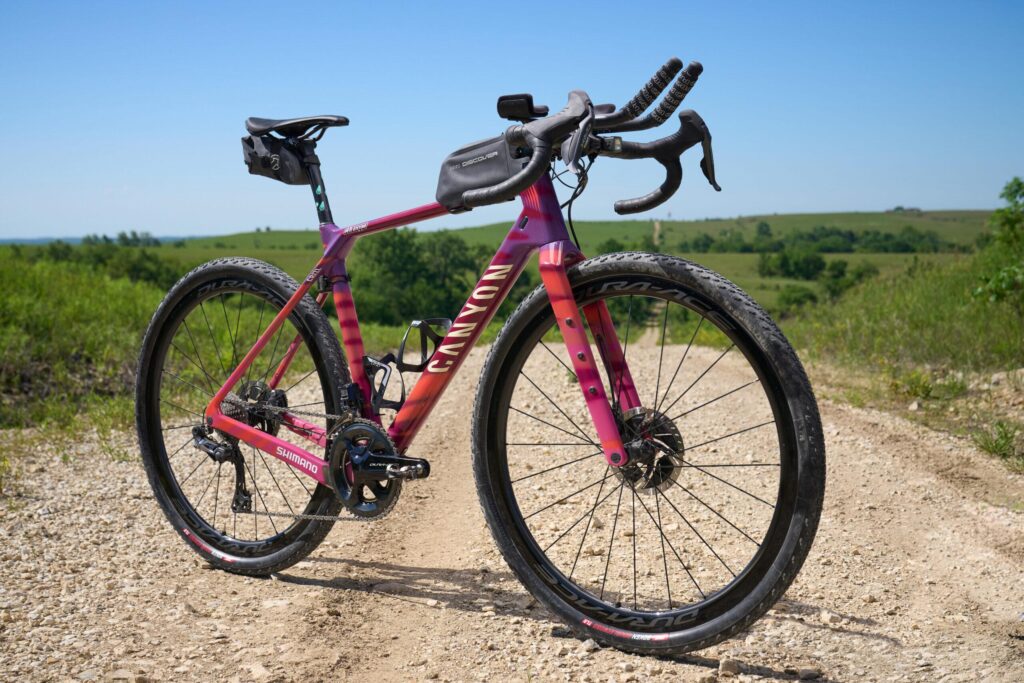Pro Bike Check: Pete Stetina’s Mt. Washington Hill Climb Bike
In the world of competitive cycling, the equipment a racer chooses can significantly influence their performance, especially in grueling events like the Mt. Washington Hill Climb. Known for its punishing ascent and unpredictable weather conditions, this iconic race attracts some of the sport’s elite athletes, pushing them to their limits. Among the top contenders is Pete Stetina, a veteran cyclist with a reputation for conquering challenging terrains with finesse and speed. In this article, we take a closer look at Stetina’s meticulously crafted bike setup for this year’s climb, examining the technology and equipment choices that could give him the edge over his competitors. As we delve into the specifics of Stetina’s ride, we’ll explore how his bike is not just a tool for competition but a testament to the engineering and innovation that define modern cycling.
Pro Bike Check: An In-Depth Look at Pete Stetina’s Climbing Machine
Pete Stetina’s bike for the Mt. Washington Hill Climb is a meticulously engineered climbing machine, crafted to optimize every watt of energy exerted on the steep gradients of one of America’s toughest ascents. Featuring a lightweight carbon frame, the bike embraces aerodynamic principles while ensuring maximum stiffness to transfer power efficiently. The bike is equipped with Shimano Di2 electronic shifting, allowing seamless gear changes that are crucial for maintaining momentum on challenging inclines. This setup not only minimizes disruptions during climbs but also reduces fatigue, letting Stetina focus on speed and technique.
The wheelset is another standout feature, utilizing Zipp 303 Firecrest wheels, which combine lightweight construction with unrivaled aerodynamics, perfect for tackling the unpredictable mountain winds. Stetina has also opted for a specialized climbing cassette that offers a wider gear range, enabling him to find the perfect cadence no matter how steep the ascent becomes. To complete the package, his bike boasts tubeless tires for improved grip and lower rolling resistance. The attention to detail in every component ensures that Stetina’s setup is not just about shedding grams; it’s a finely-tuned instrument designed for the ultimate hill climb experience.
Key Components and Innovations Driving Stetina’s Success on Mt. Washington
In preparation for the grueling ascent at Mt. Washington, Pete Stetina’s bike is a marvel of engineering, showcasing an array of cutting-edge components designed to maximize performance and reduce weight. The frame, constructed from a lightweight carbon composite, allows for both agility and durability, crucial for navigating the mountain’s steep gradients. Stetina has also opted for a meticulously curated selection of components that contribute to an optimized ride experience:
- Drivetrain: Utilizing a high-efficiency 1x drivetrain for seamless gear transitions, allowing him to focus on the climb without the hassle of multiple chainrings.
- Wheels: High-performance, aerodynamic wheels specifically engineered for low rolling resistance, enhancing speed while ensuring stability against the winds encountered on the mountain.
- Brakes: Hydraulic disc brakes offer superior stopping power, providing confidence while descending the steep slopes.
Additionally, Stetina has integrated innovative technologies to monitor his performance and optimize his training. One key feature is the use of a cutting-edge power meter to gauge his output, allowing for precise adjustments during training and competition. The bike’s aerodynamic design is complemented by accessories that reduce drag, ensuring every watt of power is efficiently translated into forward momentum. A quick overview of his bike’s pivotal components reveals the intricate balance of design and functionality:
| Component | Type | Benefit |
|---|---|---|
| Frame | Carbon Composite | Lightweight & Durable |
| Drivetrain | 1x System | Simplified Gear Changes |
| Wheels | Aerodynamic | Low Rolling Resistance |
| Brakes | Hydraulic Disc | Improved Stopping Power |
| Power Meter | Technology Integration | Real-time Output Monitoring |
Expert Recommendations for Optimizing Your Own Hill Climb Setup
To optimize your own hill climb setup, it’s vital to focus on both the bike specifications and your personal comfort. Start with the bike’s weight; lighter frames offer a significant advantage on steep inclines. Consider the following components:
- Carbon Frame: Reduces weight while maintaining stiffness.
- High-Performance Wheels: Opt for lightweight, aerodynamic options that can withstand rugged terrain.
- Gear Ratios: Custom gearing can help maintain cadence on steep climbs.
Additionally, don’t overlook the importance of personal fit and comfort. Proper contact points can enhance efficiency and endurance. Focus on:
- Saddle Adjustment: Ensure your saddle height and position are correctly set for your leg length.
- Handlebar Position: Adjusting the height can significantly impact your comfort during prolonged climbs.
- Pedal Choice: Clipless systems can improve power transfer and stability.
| Component | Optimization Tip |
|---|---|
| Frame Material | Choose carbon for reduced weight |
| Wheels | Lightweight and aerodynamic are key |
| Gearing | Customize for your climbing preference |
Concluding Remarks
In conclusion, Pete Stetina’s bike setup for the Mt. Washington Hill Climb exemplifies the meticulous attention to detail that competitive cyclists must embrace to tackle one of the most challenging races in the country. With its lightweight frame, aerodynamic components, and thoughtful customization, Stetina’s machine is a testament to the intersection of engineering and athleticism. As he gears up for this year’s event, enthusiasts and aspiring competitors alike can draw inspiration from his high-performance rig. The Mt. Washington Hill Climb is not just a race; it’s a showcase of skill, strategy, and the relentless pursuit of speed. As the racing community eagerly anticipates another thrilling showdown, all eyes will be on Stetina and the formidable bike he has prepared for the ascent.











